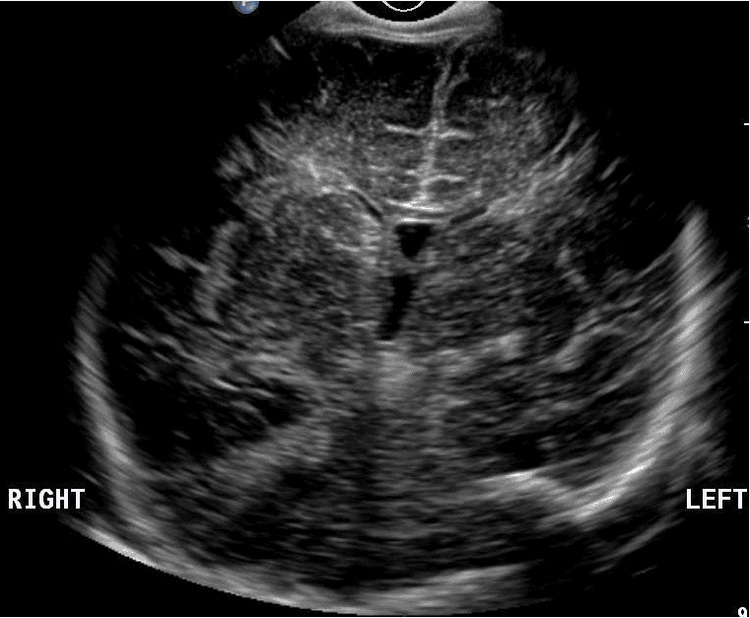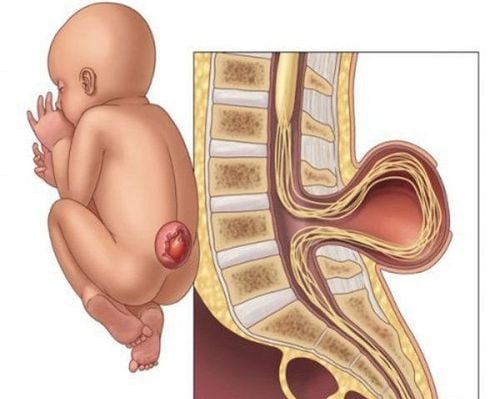This is an automatically translated article.
The article was made by Specialist Doctor I Vu Thi Hanh - Radiologist - Radiology Department - Vinmec Hai Phong International General Hospital.
Trans fontanelle ultrasound is a safe and painless test that uses ultrasound waves to create images of the brain. During the test, an ultrasound machine sends ultrasound waves into the head and images are recorded on a computer. The black and white images show the internal structure of the brain, including the brain parenchyma, ventricles, and blood vessels.
Ultrasonography of the fontanelle is only performed in infants under 6 months of age, the skull bones are not fully developed, the skull joints have not yet healed.
1. Why do fontanel ultrasound?
Doctors order fontanograms when there is concern about neurological problems in infants. Premature infants require frequent intensive care, with head ultrasounds performed to rule out neurological complications of preterm birth, such as cerebral hemorrhage or periventricular white matter damage from asphyxia.
Your baby's doctor may also order a transfocal ultrasound of your baby when he notices:
Unusual increase in head size Bulging fontanelle Notice any unusual neurological symptoms. Transthoracic ultrasound can often help diagnose:
Bleeding in brain tissue or in the ventricles Hydrocephalus There are tumors or cysts in the brain Suspected complications of meningitis.

Siêu âm qua thóp giúp phát hiện sớm bệnh não úng thủy ở trẻ sơ sinh
2. Steps to perform transthoracic ultrasound
2.1 Preparing for a fontanel ultrasound Parents don't need to do anything special to prepare their baby for a transvaginal ultrasound. Parents should tell the doctor about any medications their child is taking before having an ultrasound.
2.2 Performing an ultrasound Transfocal ultrasound is done in the radiology department of a hospital or in a radiology center. Parents can often accompany their child to provide reassurance and support. If your child is in the hospital and cannot easily be brought to the radiology department, a portable ultrasound machine can be delivered. This is usually done in the neonatal intensive care unit (NICU). The fontanel ultrasound can be done with the baby on the belly or back, or even in the parent's arms, if needed. The room is usually dark enough to see clearly on the computer screen. The sonographer will apply a clear, warm gel to your baby's scalp. This gel helps to transmit sound waves. The sonographer will then move the transducer over the gel. The transducer emits high-frequency sound waves, and the computer measures the sound waves that bounce off the head. The computer changes those sound waves into an image to be analyzed. The examination usually takes 15-30 minutes.

Siêu âm qua thóp ở trẻ sơ sinh cần được thực hiện bởi các bac sĩ chuyên khoa
3. The benefits and risks of performing transthoracic ultrasound
3.1 Benefits Gained Most ultrasound scans are non-invasive. Sometimes, the ultrasound exam can be temporarily uncomfortable, but it is not painful. Ultrasound is common, easy to use, and less expensive than most other imaging methods. Ultrasound imaging is extremely safe and does not use radiation. Ultrasound scans give clear images of soft tissues that do not show up well on X-ray images. 3.2 Possible risks The fontanel sonogram is not known to have harmful effects in children.

Hình ảnh kết quả siêu âm qua thóp ở trẻ sơ sinh
4. What are the limitations of transfocal ultrasound?
Ultrasound exams are very sensitive to movement, and a child who is constantly active or crying will delay the test. Parents can feed the baby, or give the baby a pacifier or favorite toy to keep the baby comfortable during the ultrasound.
Customers who need medical examination and treatment can directly go to Vinmec International General Hospital nationwide, or contact the hotline number HERE.













